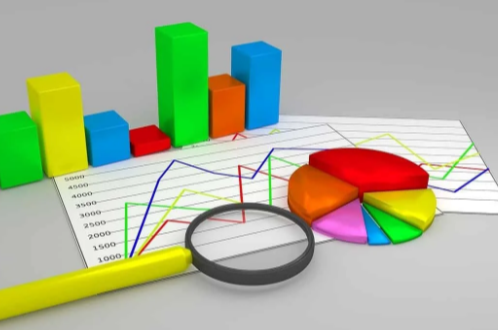How to Present Statistical Data in Psychology Assignments?

Psychology is one aspect of science that has often been underestimated. For example, mental health in students has always been overlooked. However, nowadays, this trend is changing. So, there is more focus on psychology courses than before. Presenting statistical data is one of the most crucial aspects of doing these papers. Students need to present these data effectively to convey their research findings. By presenting data accurately, you can ensure that your readers understand your work. Here is a guide on how you can present statistical data in psychology assignments with enhanced clarity –
1. Understand Your Data
Many of you seek psychology assignment help at the earliest. However, there is a simple way of doing it yourself. If you want to present statistical data, you should have a solid grasp of what it represents. Identify the type of data you have. It can be –
- Nominal
- Ordinal
- Interval
- Ratio
Once you have identified it, understand its characteristics. Knowing the data type will help you understand how they can influence the audience.
So, before you take help from the most reliable academic site like MyAssignmenthelp.com, make sure to go through this table for a detailed idea about presenting data –
| Type of Data | Statistical Analyses | Visualisations |
| Categorical Data | Chi-Square TestFisher’s Exact TestLogistic Regression | Frequency DistributionClustered Bar ChartsProportional RepresentationProportional Visualization |
| Continuous Data | Descriptive StatisticsCorrelation AnalysisRegression Analysis | HistogramsBox PlotsScatter PlotsLine Graphs |
2. Choose the Right Statistical Measures
Select appropriate statistical measures based on your data type and research questions. Common statistical measures include:
Descriptive Statistics: Summarise your data using –
- Mean
- Median
- Mode
- Range
- Variance
- Standard deviation
These provide a broad overview of your dataset.
Inferential Statistics: Use tests like –
- T-tests
- ANOVA
- Chi-square tests
- Regression analysis
All these can be used to draw conclusions about your test hypotheses. If you find this process challenging, you may consider options to buy assignment online for expert help.
3. Use Visualizations Effectively
Visual representations of data highlight key findings. This helps in the easy comprehension of information. Here are some common types of visualisations –
- Bar Graphs: Ideal for comparing categorical data or discrete variables. Bar graphs show the frequency or percentage of different categories.
- Histograms: Useful for displaying the distribution of continuous data. They show the frequency of data points within certain ranges.
- Pie Charts: Best for illustrating proportions or percentages within a whole. However, use them sparingly and only when the data categories are limited.
- Line Graphs: Effective for showing trends over time. Line graphs can illustrate changes in variables across different time points.
- Scatter Plots: Used to display the relationship between two continuous variables. They help in identifying correlations or patterns.
Ensure your visualizations are clear and well-labeled. Avoid clutter and keep the design simple. This helps the audience to focus on the key information.
Read more: Revolutionizing Learning and Collaboration: The Impact of Interactive Flat Panel Displays
4. Provide Clear Labels and Descriptions
Every table, chart, or graph should have clear, descriptive labels. Include the following elements:
- Titles: Each visualization should have a descriptive title explaining what it represents.
- Axes Labels: If you are using graphs and charts, label the x-axis and y-axis with the variables they represent.
- Legends: If there are multiple data series, provide a legend to clarify what each element represents.
- Source: If you’re using data from external sources, cite them appropriately.
5. Include Statistical Results in Text
Integrate your statistical findings into the text of your assignment. Present key results succinctly, and refer to the tables or figures for detailed information. Use proper statistical notation and report p-values, confidence intervals, effect sizes, and other relevant statistics. For example:
- Descriptive Statistics: “The mean score for anxiety was 24.5 (SD = 5.2), indicating a moderate level of anxiety among participants.”
- Inferential Statistics: “A t-test revealed a significant difference in depression scores between the treatment and control groups (t(58) = 3.45, p < .01), suggesting that the treatment was effective.”
6. Interpret and Discuss Findings
Once you present your statistical data, provide interpretation and context. Discuss what the results mean in relation to your research questions. Explain any
- Patterns
- Trends
- Anomalies observed in the data
Relate them to previous research and discuss findings.
7. Ensure Accuracy
Accuracy is paramount when presenting statistical data. Double-check calculations and ensure all statistical measures and visualizations accurately reflect your data. Clarity is equally important—avoid jargon and complex terminology that might confuse readers. Aim for straightforward explanations that make your findings accessible.
8. Review and Edit
Finally, review your assignment to ensure that all statistical data is presented logically and coherently. Check for consistency in formatting, labeling, and notation. Edit the paper diligently with the help of AI tools. A concise paper will help you to improve the overall quality of your assignment.
Presenting statistical data in psychology assignments involves various steps. In this blog, we have discussed all of them in detail. So, follow these guidelines to ensure that your data is communicated to your readers effectively.




